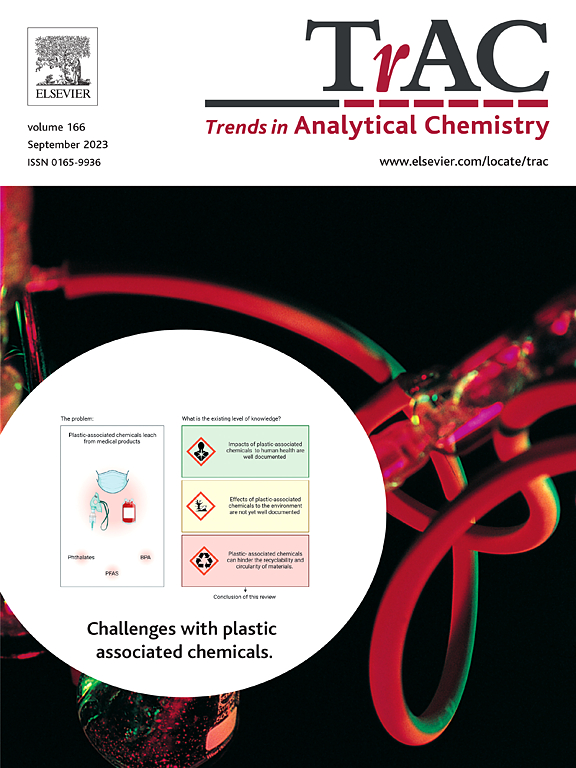Exploring the potential of green chemistry in reversed-phase liquid chromatography: A review of sustainable solvents
IF 11.8
1区 化学
Q1 CHEMISTRY, ANALYTICAL
引用次数: 0
Abstract
This article delves into the growing field of green analytical chemistry, focusing on sustainable solvents for reversed-phase liquid chromatography (RP LC). RP LC is a widely applied technique in the pharmaceutical, food, and environmental analysis industries, consuming vast quantities of toxic and non-renewable solvents that pose serious environmental and health risks. In response to the urgent need for greener alternatives, this review discusses organic solvents such as ethanol, innovative options such as Cyrene and dimethyl carbonate, and surfactants in micellar liquid chromatography (MLC). In addition, the potential of pure water, ionic liquids (ILs), and deep eutectic solvents (DESs) was evaluated. By analyzing the efficacy, environmental impact, and feasibility of green solvents, the review highlights their potential to replace conventional solvents, supporting safer and more sustainable analytical practices. This comprehensive and critical analysis of recent reports aims to guide future research and promote the use of green solvents in RP LC.
探索反相液相色谱中的绿色化学潜力:可持续溶剂综述
本文深入探讨了不断发展的绿色分析化学领域,重点是反相液相色谱(RP LC)的可持续溶剂。反相液相色谱是一种广泛应用于制药、食品和环境分析行业的技术,需要消耗大量有毒且不可再生的溶剂,对环境和健康造成严重危害。为了满足对绿色替代品的迫切需求,本综述讨论了乙醇等有机溶剂、赛络宁和碳酸二甲酯等创新选择以及胶束液相色谱(MLC)中的表面活性剂。此外,还评估了纯水、离子液体(IL)和深共晶溶剂(DES)的潜力。通过分析绿色溶剂的功效、环境影响和可行性,综述强调了它们取代传统溶剂的潜力,支持更安全、更可持续的分析实践。这份对近期报告进行的全面而严谨的分析旨在指导未来的研究并促进绿色溶剂在 RP LC 中的使用。
本文章由计算机程序翻译,如有差异,请以英文原文为准。
求助全文
约1分钟内获得全文
求助全文
来源期刊

Trends in Analytical Chemistry
化学-分析化学
CiteScore
20.00
自引率
4.60%
发文量
257
审稿时长
3.4 months
期刊介绍:
TrAC publishes succinct and critical overviews of recent advancements in analytical chemistry, designed to assist analytical chemists and other users of analytical techniques. These reviews offer excellent, up-to-date, and timely coverage of various topics within analytical chemistry. Encompassing areas such as analytical instrumentation, biomedical analysis, biomolecular analysis, biosensors, chemical analysis, chemometrics, clinical chemistry, drug discovery, environmental analysis and monitoring, food analysis, forensic science, laboratory automation, materials science, metabolomics, pesticide-residue analysis, pharmaceutical analysis, proteomics, surface science, and water analysis and monitoring, these critical reviews provide comprehensive insights for practitioners in the field.
 求助内容:
求助内容: 应助结果提醒方式:
应助结果提醒方式:


